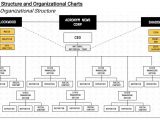EQ and you (if you’re a coyote or badger)
February 7, 2020
You may have seen the video:
I was excited about this because I've worked with both groups involved in capturing this video, Pathways for Wildlife and Peninsula Open Space Trust. Both of them have been involved in protecting Coyote Valley, a project I've worked on since 2003. Coyote Valley is the 7400-acre valley floor south of San Jose, stopping the post-World War 2 suburban sprawl from San Francisco through Silicon Valley. Coyote Valley sets the stage for growth going up and not out in California.
Protecting open space has much more value than preventing sprawl. It can sequester carbon as well as prevent carbon emissions from sprawl. It can also be crucial for maintaining wildlife linkages. The Santa Cruz Mountain Range is a large chunk of California habitat mostly separated from the rest of California habitat, with partial exceptions at Coyote Valley and along its southern margins. While large, it's not big enough to maintain permanently viable populations of rarer animals like mountain lions, and badgers. It could also be an important climate refuge - it's cooler than southern and eastern habitats adjacent to it.
The animals need to get back and forth though - they need both ways to get across highways, and welcoming habitats on both sides of highways. Protecting Coyote Valley and maintaining pathways for wildlife are linked.
It's especially true in the case of badgers, so that video, in addition to being cute, could be a waddling badger butt of genetic survival.
I did a bit of research on this hunting relationship between coyotes and badgers. It's been well known for decades. There are some claims that it was known by Native Americans - I don't doubt that, but the links I've read don't actually support the claim. Other badger and canid species live in the rest of the world, but I haven't seen any claims for the same behavior.
Cross-species mutualism doesn't have to be learned behavior but this certainly is, and it requires a certain amount of intelligence. Coyotes are already social animals but an adult badger is solitary and not primed to cooperate, so it takes some brains to do so. The cooperation is limited - they don't share the squirrels they catch, but they are still deliberately associating with each other and changing their behavior. This video shows travel together - it doesn't say how far they had to go to get to hunting grounds, but presumably it was at least not in immediate sight.
It's possible that the only thing they understand is that their own hunting seems more successful when the other animal is present. That's the Occam's Razor to make it happen. OTOH, it doesn't exclude that one or both animals understand a bit more, that the other animal's behavior helps their own. Badgers spend less time looking for fleeing squirrels when coyotes are present and more time digging, so they might understand.
Encephalization Quotient is an extremely rough, but readily-measured, parameter indicating an animal's intelligence. The larger the brain is relative to body mass, the more intelligent the animal is likely to be. Adjust the ratio for animal weight because large animals don't need brains to scale linearly with body size, and you've got EQ.
An EQ of 1.0 is about what you'd expect across mammal species. This paper says American badgers are at 1.4 and coyotes at 1.6. Social animals like coyotes tend to be smarter but it's interesting to see badgers up somewhat on the higher end. Being able to cooperate like this might be a factor that keeps evolutionary pressure on badgers to stay smart.
Somebody really needs to radio-collar a known pair of cooperating coyotes and badgers. It would be interesting to see how often they cooperate, whether they appear to be searching for each other, and the distance they travel together, all of which might give a sense of what they actually understand.
And meanwhile, protect their habitats and chances to cross highways safely.
Fantastic video! As the link says, they work together to hunt ground squirrels (badger digs, coyote stops escapees, one or the other gets the prey, both get squirrels over time). https://t.co/KBvbGovHXQ— Brian Schmidt (@BSchmidtTweets) February 5, 2020
I was excited about this because I've worked with both groups involved in capturing this video, Pathways for Wildlife and Peninsula Open Space Trust. Both of them have been involved in protecting Coyote Valley, a project I've worked on since 2003. Coyote Valley is the 7400-acre valley floor south of San Jose, stopping the post-World War 2 suburban sprawl from San Francisco through Silicon Valley. Coyote Valley sets the stage for growth going up and not out in California.
Protecting open space has much more value than preventing sprawl. It can sequester carbon as well as prevent carbon emissions from sprawl. It can also be crucial for maintaining wildlife linkages. The Santa Cruz Mountain Range is a large chunk of California habitat mostly separated from the rest of California habitat, with partial exceptions at Coyote Valley and along its southern margins. While large, it's not big enough to maintain permanently viable populations of rarer animals like mountain lions, and badgers. It could also be an important climate refuge - it's cooler than southern and eastern habitats adjacent to it.
The animals need to get back and forth though - they need both ways to get across highways, and welcoming habitats on both sides of highways. Protecting Coyote Valley and maintaining pathways for wildlife are linked.
It's especially true in the case of badgers, so that video, in addition to being cute, could be a waddling badger butt of genetic survival.
I did a bit of research on this hunting relationship between coyotes and badgers. It's been well known for decades. There are some claims that it was known by Native Americans - I don't doubt that, but the links I've read don't actually support the claim. Other badger and canid species live in the rest of the world, but I haven't seen any claims for the same behavior.
Cross-species mutualism doesn't have to be learned behavior but this certainly is, and it requires a certain amount of intelligence. Coyotes are already social animals but an adult badger is solitary and not primed to cooperate, so it takes some brains to do so. The cooperation is limited - they don't share the squirrels they catch, but they are still deliberately associating with each other and changing their behavior. This video shows travel together - it doesn't say how far they had to go to get to hunting grounds, but presumably it was at least not in immediate sight.
It's possible that the only thing they understand is that their own hunting seems more successful when the other animal is present. That's the Occam's Razor to make it happen. OTOH, it doesn't exclude that one or both animals understand a bit more, that the other animal's behavior helps their own. Badgers spend less time looking for fleeing squirrels when coyotes are present and more time digging, so they might understand.
Encephalization Quotient is an extremely rough, but readily-measured, parameter indicating an animal's intelligence. The larger the brain is relative to body mass, the more intelligent the animal is likely to be. Adjust the ratio for animal weight because large animals don't need brains to scale linearly with body size, and you've got EQ.
An EQ of 1.0 is about what you'd expect across mammal species. This paper says American badgers are at 1.4 and coyotes at 1.6. Social animals like coyotes tend to be smarter but it's interesting to see badgers up somewhat on the higher end. Being able to cooperate like this might be a factor that keeps evolutionary pressure on badgers to stay smart.
Somebody really needs to radio-collar a known pair of cooperating coyotes and badgers. It would be interesting to see how often they cooperate, whether they appear to be searching for each other, and the distance they travel together, all of which might give a sense of what they actually understand.
And meanwhile, protect their habitats and chances to cross highways safely.


